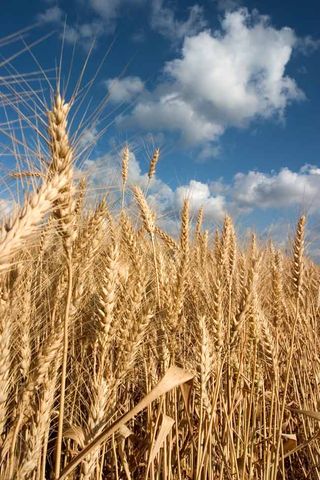
Marlene Cimons is a Washington, D.C. based freelance writer who specializes in science, health and the environment.
Her work frequently appears in, among other outlets, The Washington Post, Microbe Magazine, and Climate Progress. She also writes for Climate Nexus, a nonprofit that aims to tell the climate story in innovative ways that raise awareness of, dispel misinformation about and showcase solutions to climate change and energy issues in the United States. She contributed this article to Live Science's Expert Voices: Op-Ed & Insights.
As prolonged drought and extreme temperatures have taken their terrible toll on food crops in recent years, nations have tended to focus on regional episodes, such as a single drought-afflicted state or region. Now, scientists have assessed the global scale of food crop disasters for the first time — and the news is not good.
In a new study, researchers from Canada and the United Kingdom estimate that cereal harvests — including rice, wheat and maize — decreased by an average of 9 to10 percent during droughts and heat waves between 1964 and 2007, with the worst effects seen in North America, Europe, and Australia and its neighboring islands. Furthermore, the impact has grown larger in recent years. With climate change likely to exacerbate extreme weather and make it more common in the future, the study is perhaps the most comprehensive examination yet of the historic impact of extreme weather on global crop production.
Fading food supplies
Harvested area refers to the planted cropland area that is harvested in a given year.
"It takes time, energy and money to harvest crops from a field, and if crops are severely enough damaged, then farmers may choose not to harvest at all," Lesk said. "You could call this a 'total crop failure,' and it shows up in the data as a drop in harvested area. Yield is the mass of grain harvest per unit area harvested — in other words, the productivity of the crops on an area basis. If a crop fails completely and is not harvested, then it doesn't end up in the yield calculations, so you have to consider both metrics to get a full picture."
If you're a topical expert — researcher, business leader, author or innovator — and would like to contribute an op-ed piece, email us here.
If you're a topical expert — researcher, business leader, author or innovator — and would like to contribute an op-ed piece, email us here.
The scientists concluded that droughts caused partial and total damage to crops, resulting in drops in both yield and harvested area. Heat waves, in contrast, only resulted in yield declines. "Droughts can cause more complete crop failures, possibly because they can last so long and damage crops so severely that farmers don't bother harvesting," Lesk said. "Another aspect is that longer droughts might discourage planting altogether, possibly because farmers have run out of water for irrigation or money for seeds."
The scientists did not specifically analyze any price or trade effects, but they have "come up with a quick, rough estimate for the 9 to 10 percent in annual dollar terms," Lesk said. "About $10 billion worth of crops per year, globally, has been lost to drought and heat waves," Lesk said.
The researchers did not find any impacts from floods or extreme cold. Also, in one optimistic result, their analysis found that extreme weather events had no lasting impact on agricultural production in the years that followed the disasters.
Nevertheless, the work provides another compelling argument "to start scaling up the myriad climate change mitigation strategies that already exist — green subsidies and investment, carbon taxes and markets, and especially ending fossil fuel subsidies," Lesk said. "Climate change poses a colossal economic risk to the world — tens to hundreds of trillions of dollars in damage, by some estimates. Spending now to avoid it is truly an excellent investment."









No comments:
Post a Comment